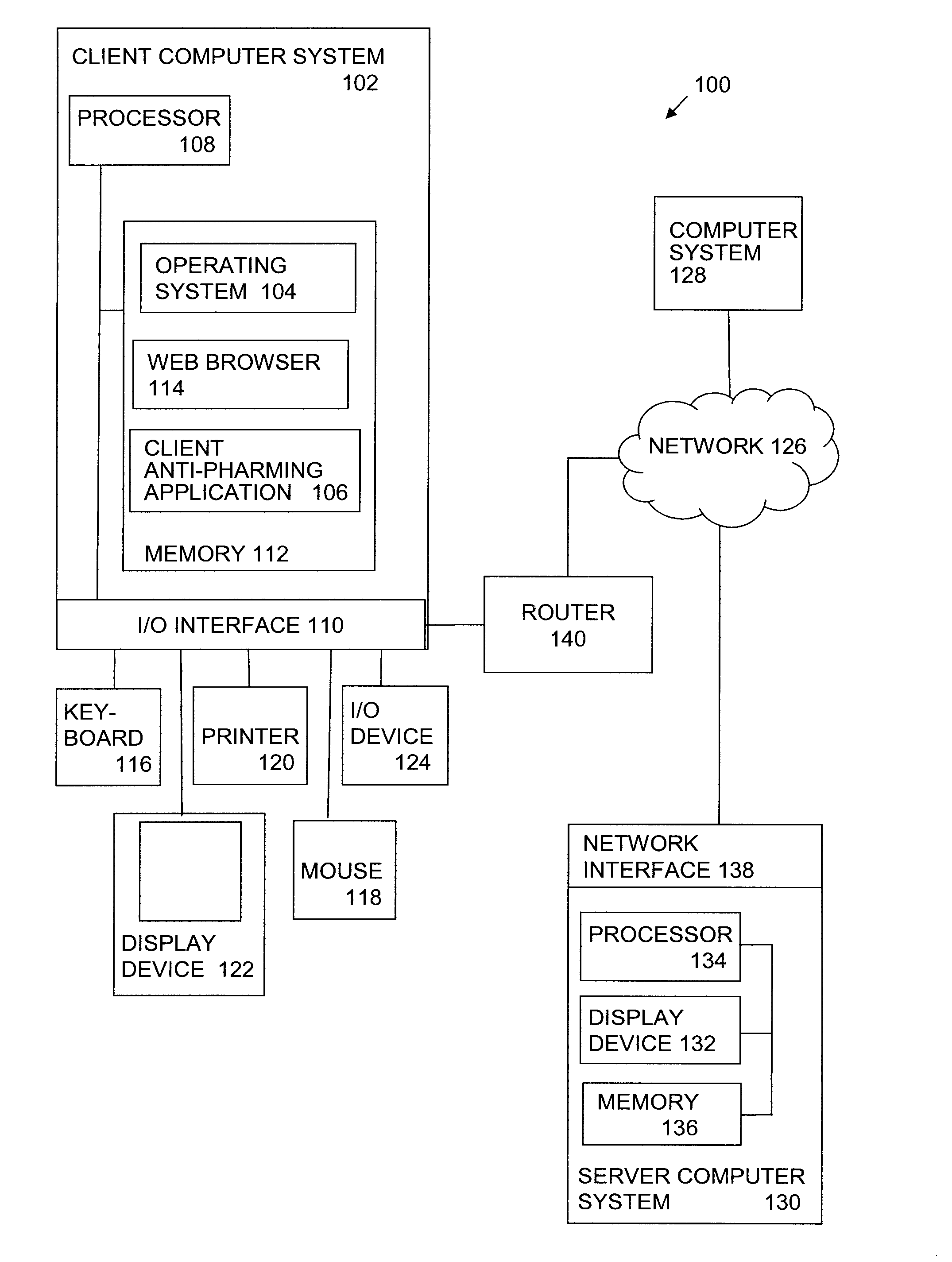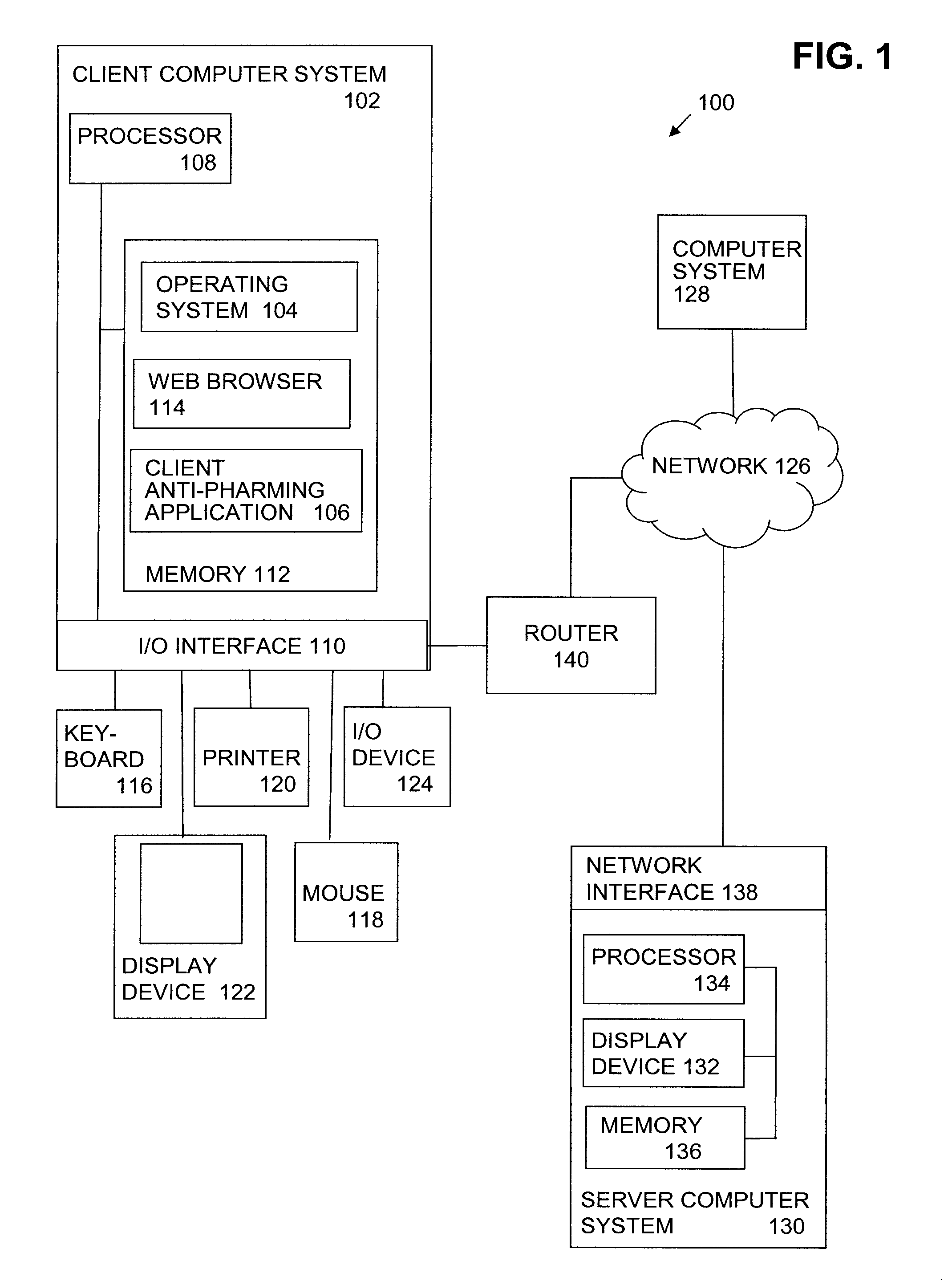Client side protection against drive-by pharming via referrer checking
a referrer and client technology, applied in the field of computer security, can solve the problems of inadvertently opening up the router for malicious attacks, identity theft, denial of service, etc., and achieve the effect of preventing malicious activity, preventing malicious activity, and preventing malicious activity
- Summary
- Abstract
- Description
- Claims
- Application Information
AI Technical Summary
Benefits of technology
Problems solved by technology
Method used
Image
Examples
Embodiment Construction
[0015]In a typical home network utilizing a router, a user inputs a request for a resource, such as the URL of a web page, into a web browser on a client computer system of the home network. The web browser generates an HTTP request for the web page that is sent to the router which manages the DNS settings for the computer systems on the home network. Typically, the router performs a DNS lookup to locate the IP address associated with the URL of the requested web page and when completed, the HTTP request is sent to the associated server hosting the web page.
[0016]In a drive-by pharming attack, a web page including malicious code, such as drive-by pharming code, is returned as an HTTP response to the HTTP request. When the web page is run in the user's web browser, initially, the malicious code begins sending HTTP requests from the web browser to the router in an attempt to learn the IP address of the router. Once the router's IP address is obtained, the malicious code then connects ...
PUM
 Login to View More
Login to View More Abstract
Description
Claims
Application Information
 Login to View More
Login to View More - R&D
- Intellectual Property
- Life Sciences
- Materials
- Tech Scout
- Unparalleled Data Quality
- Higher Quality Content
- 60% Fewer Hallucinations
Browse by: Latest US Patents, China's latest patents, Technical Efficacy Thesaurus, Application Domain, Technology Topic, Popular Technical Reports.
© 2025 PatSnap. All rights reserved.Legal|Privacy policy|Modern Slavery Act Transparency Statement|Sitemap|About US| Contact US: help@patsnap.com



